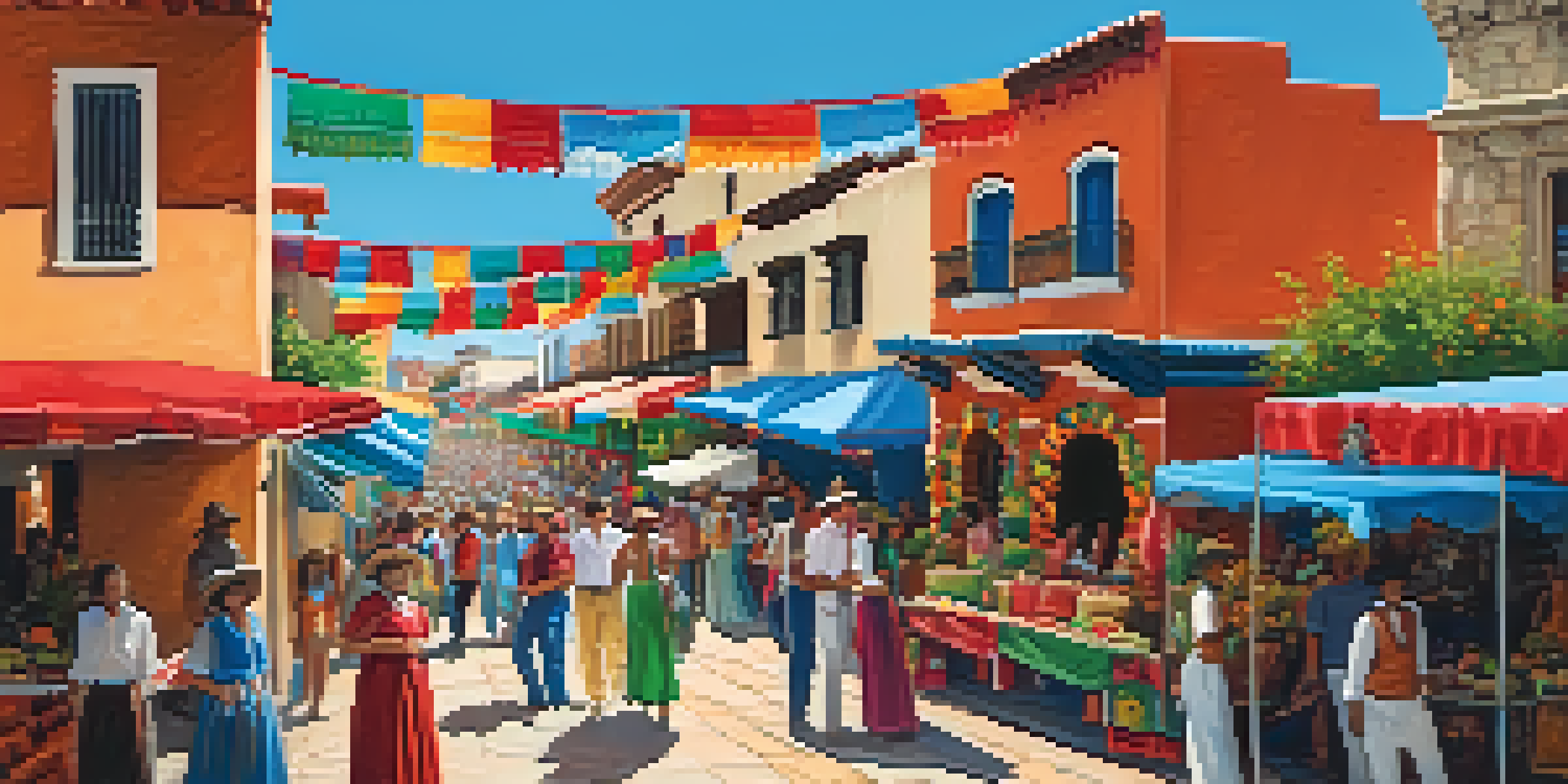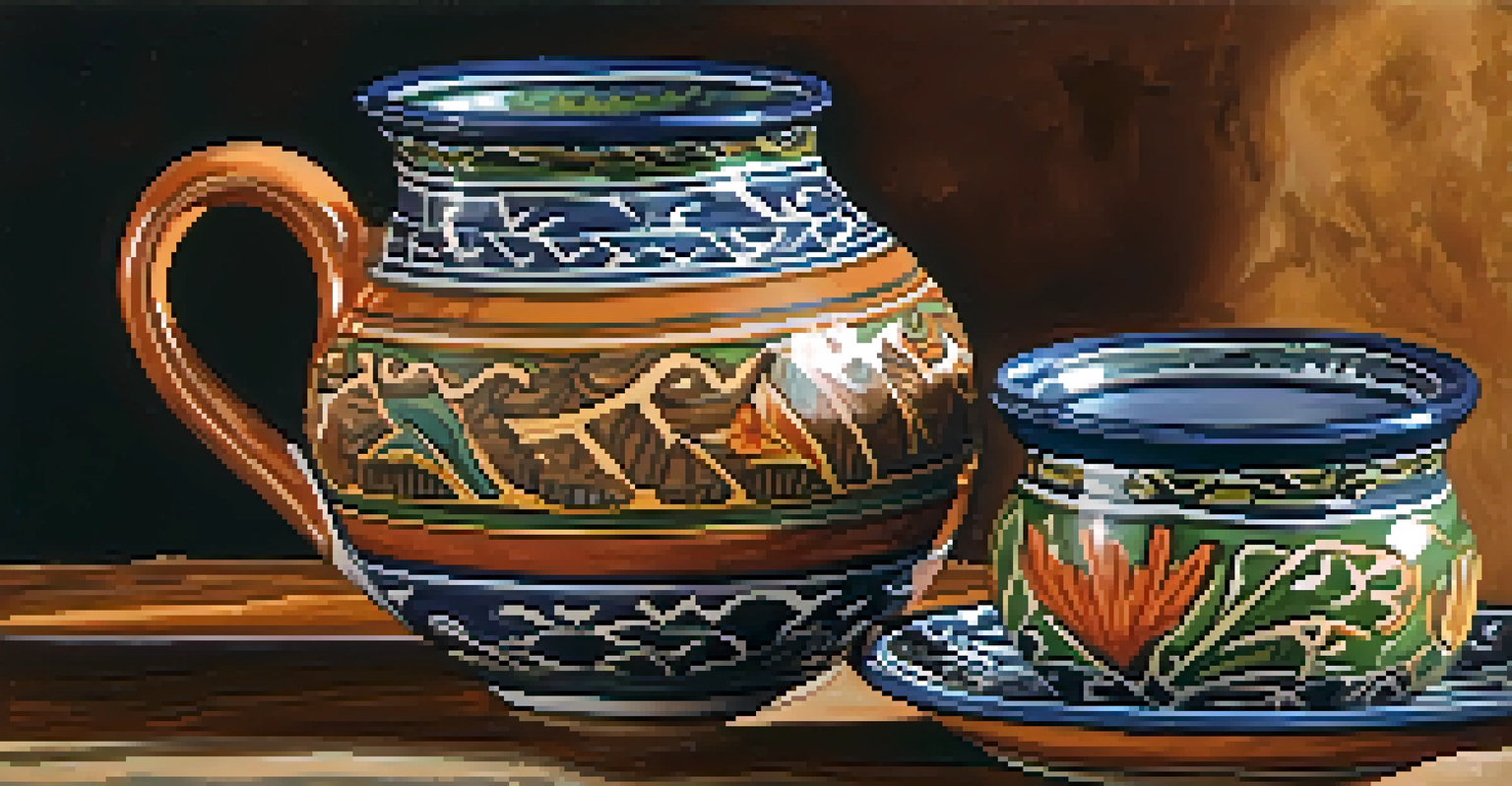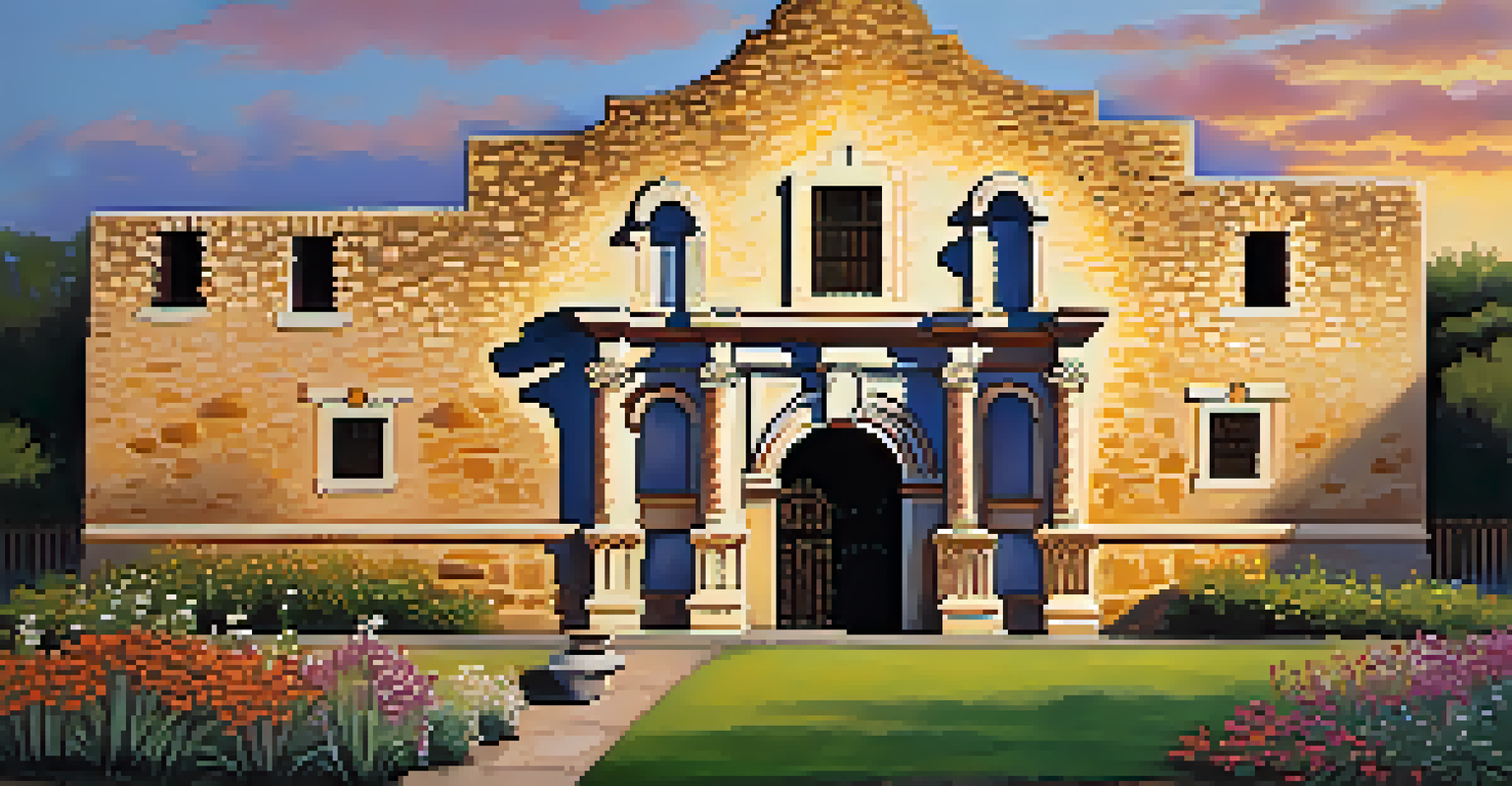The Influence of Spanish Traditions on San Antonio Culture

Historical Roots: The Spanish Influence in San Antonio
San Antonio's history is deeply intertwined with Spanish colonization, which began in the 18th century. The establishment of missions, like the famous Mission San Antonio de Padua, laid the groundwork for the city's cultural landscape. These missions not only served as religious centers but also as hubs for community gathering and cultural exchange.
Culture is the widening of the mind and of the spirit.
The Spanish settlers brought with them their language, customs, and traditions, which have been passed down through generations. This rich heritage is evident in the architecture, food, and festivals that define the city today. The blend of Spanish and Native American influences created a unique cultural tapestry that continues to thrive.
As a result, San Antonio has become a living museum of Spanish traditions, where every corner reflects its storied past. From the vibrant murals depicting historical events to the names of streets and plazas, the Spanish influence remains a vital part of the city's identity.
Culinary Delights: Spanish Cuisine in San Antonio
The culinary scene in San Antonio is a delicious testament to its Spanish roots. Dishes like paella and tapas, which originated in Spain, have found their way into local restaurants, offering a taste of the Iberian Peninsula. The city's famous Tex-Mex cuisine further showcases this blend, combining traditional Spanish recipes with local ingredients.

Food festivals, such as the annual Fiesta San Antonio, celebrate this rich culinary heritage by highlighting local chefs who prepare authentic Spanish dishes. These events invite everyone to come together, share a meal, and appreciate the diverse flavors that define the city's food culture. It’s a wonderful example of how traditions can be celebrated and adapted over time.
Spanish Heritage Shapes San Antonio
The city's cultural identity is profoundly influenced by its Spanish roots, evident in architecture, cuisine, and community celebrations.
Moreover, many San Antonio families have their own cherished recipes that reflect their Spanish ancestry, passed down through generations. This personal connection to food not only enriches cultural identity but also fosters a sense of community among residents.
Festivals and Celebrations: Embracing Spanish Customs
San Antonio's calendar is filled with vibrant festivals that highlight its Spanish heritage. Events like Fiesta San Antonio and Dia de los Muertos showcase colorful parades, music, dance, and traditional attire. These celebrations not only honor the city's history but also bring the community together in a lively atmosphere of joy and remembrance.
Food is our common ground, a universal experience.
During Fiesta, you’ll see locals and visitors alike enjoying food booths, live music, and cultural performances that pay homage to Spanish traditions. It’s a time when the city transforms into a bustling hub of color and activity, reflecting the spirit of its diverse population. This festival truly embodies the heart of San Antonio’s cultural identity.
Moreover, these celebrations often include elements such as folklórico dance, which highlights the region's Spanish and Mexican roots. By participating in these events, residents keep their cultural traditions alive while also inviting newcomers to learn and appreciate the rich heritage of San Antonio.
Architectural Wonders: Spanish Influence on San Antonio's Design
The architectural landscape of San Antonio is a stunning reflection of its Spanish heritage. The iconic Alamo, with its Spanish Mission-style design, stands as a symbol of the city’s history and resilience. This structure not only serves as a historical site but also as a reminder of the cultural influences that shaped the region.
Throughout the city, you can find beautiful examples of Spanish Colonial architecture, characterized by stucco exteriors, red-tiled roofs, and intricate wrought iron details. These design elements create a sense of place that transports visitors to a different time, offering a glimpse into the past.
Vibrant Festivals Celebrate Culture
Festivals like Fiesta San Antonio highlight the city's Spanish heritage through colorful parades, music, and traditional dance.
Additionally, the River Walk area showcases Spanish-inspired plazas and bridges, enhancing the city’s charm. This architectural harmony not only attracts tourists but also instills a sense of pride in local residents who cherish their unique cultural heritage.
Language and Literature: Spanish Impact on Communication
Spanish is a vital part of San Antonio's identity, spoken by a significant portion of the population. This linguistic heritage influences daily life, from casual conversations to local signage, making Spanish an integral part of the city's cultural fabric. The coexistence of English and Spanish reflects the city's diverse community and its deep-rooted connections to its history.
Literature also plays a role in preserving Spanish traditions. Local authors often draw inspiration from their cultural backgrounds, weaving stories that resonate with both residents and visitors. Through books, poetry, and storytelling, the Spanish language continues to flourish in San Antonio, enriching the community's cultural landscape.
Moreover, bilingual education initiatives in schools aim to promote language proficiency among younger generations. This commitment to preserving the Spanish language ensures that future San Antonio residents remain connected to their rich heritage, while also fostering a sense of inclusivity.
Music and Dance: The Spanish Rhythm in San Antonio
Music and dance are integral to San Antonio's cultural scene, with Spanish influences evident in various genres. Traditional Spanish music, such as flamenco and mariachi, can be heard at festivals and cultural events throughout the city. These performances not only entertain but also educate audiences about the historical significance of these art forms.
Dance is equally important in celebrating Spanish traditions. Folklórico dance groups often perform at community events, showcasing vibrant costumes and lively choreography that tell stories of the past. This form of expression fosters a sense of pride and belonging within the community, as participants connect with their heritage.
Art and Cuisine Reflect Spanish Roots
Local artisans and chefs continue to honor their Spanish ancestry, creating a rich tapestry of art and culinary delights that define San Antonio.
Additionally, local venues host live music events featuring Spanish-inspired rhythms, inviting people to dance and celebrate together. This lively atmosphere encourages cultural exchange and appreciation, making San Antonio a vibrant hub for music and dance lovers alike.
Art and Craftsmanship: Celebrating Spanish Heritage
San Antonio is home to a rich tapestry of art and craftsmanship influenced by its Spanish heritage. Local artisans often create stunning pieces that reflect traditional Spanish techniques, such as pottery, textiles, and metalwork. These crafts not only serve as decorative items but also as cultural artifacts that tell the story of the community's history.
Art galleries and cultural centers showcase works from local artists who draw inspiration from their Spanish roots. From vibrant paintings to intricate sculptures, these creations highlight the beauty and complexity of the city's cultural identity. It's a reminder of how art can bridge generations and keep traditions alive.

Moreover, events like art walks and craft fairs provide platforms for local artisans to share their work with the community. These gatherings foster appreciation for the craftsmanship involved and encourage visitors to engage with the rich artistic heritage that defines San Antonio.